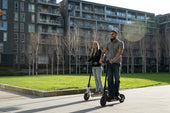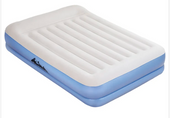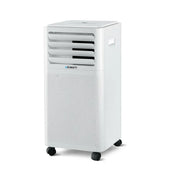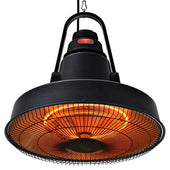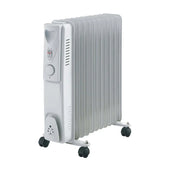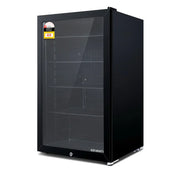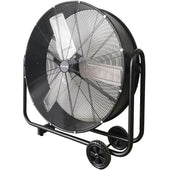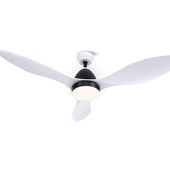Introduction: Overview of Treadmill Running and Outdoor Exercise
Treadmill running and outdoor exercise are two popular forms of physical activity that cater to different fitness goals and preferences. Treadmills provide a controlled environment where variables such as speed, incline, and weather can be adjusted to suit individual needs. They are widely used in gyms and homes for their convenience and accessibility. Conversely, outdoor exercise involves running or walking in natural environments like parks, streets, or trails, offering unpredictable terrains and environmental exposure.
Both activities engage core muscle groups differently due to variations in surface stability, incline conditions, and air resistance. During days of regular training, understanding these differences is crucial for optimising performance and safety.
Key Differences in Biomechanical Demands
Treadmill running involves consistent surface conditions and a moving belt, which reduces ground reaction forces compared to outdoor running. This alters the biomechanical demands on muscles, particularly in the lower limbs. The motorised belt reduces the need for forward propulsion, minimising work by the hamstrings while placing greater emphasis on hip flexors.
Outdoor running requires adapting to variable terrain, such as hills or uneven surfaces, which engages stabiliser muscles and enhances proprioceptive control. Wind resistance outdoors adds another level of exertion, influencing energy expenditure and posture dynamics. Stress on joints may vary due to the irregular impact forces experienced on natural ground.
Impact of Surface Variability on Gait and Posture
Surface variability significantly influences gait mechanics and body posture during running. Outdoor terrain often includes uneven surfaces like gravel, grass, or sloping pathways, which force runners to adapt their strides and engage stabilising muscles. These adjustments can enhance proprioception and overall balance by promoting varied muscle activation. In contrast, treadmill surfaces offer uniformity, fostering consistent movement patterns and reducing the need for compensatory adaptations. While stability is enhanced on treadmills, the lack of surface unpredictability may limit exposure to real-world motor challenges. Transitioning between these environments requires biomechanical adaptations, highlighting their mutual impact on muscular coordination and joint alignment.
Inclination and Resistance: Customisation Versus Natural Terrain
Treadmill running allows users to customise incline levels at the push of a button, offering precise control over resistance and intensity. This feature enables consistent simulations of uphill running regardless of weather or time constraints. However, a treadmill’s mechanical belt may reduce some of the natural effort required for propulsion, altering muscle engagement patterns.
Outdoor terrain, by contrast, provides a dynamic experience with natural variations in slope, texture, and resistance. Runners encounter unpredictable challenges, such as uneven ground or wind resistance, promoting more comprehensive muscle activation. These variations can enhance proprioception and coordination absent in controlled treadmill conditions, influencing biomechanical responses differently.
Role of Environmental Factors in Movement Dynamics
Environmental factors significantly influence movement dynamics in treadmill running and outdoor exercise. Outdoor settings involve variable elements such as wind resistance, terrain changes, and weather conditions. These factors demand constant adjustments in posture, stride, and muscle activation, promoting neuromuscular engagement. Wind resistance, for instance, increases energy expenditure by requiring greater force application with each stride.
On treadmills, movement dynamics are more controlled, as the belt's consistent speed and flat surface eliminate external variations. Environmental feedback, such as visual and tactile stimuli, is reduced, potentially impacting balance and coordination. Additionally, climatic conditions, like outdoor air temperature, influence muscle efficiency and endurance differently compared to indoor parameters.
Footstrike Patterns: How Surfaces Influence Running Mechanics
Footstrike patterns—whether forefoot, midfoot, or heel strikes—are significantly influenced by surface properties. Outdoor surfaces, such as trails, roads, or grass, typically provide irregular textures and variable firmness, promoting adaptive mechanics and altering pressure distribution during footstrike. Conversely, treadmills feature uniform surfaces with predictable cushioning, which can favour consistent heel-to-midfoot strikes and reduce impact forces.
Outdoor running often necessitates changes in stride length and cadence due to terrain variability, encouraging natural adjustments. Treadmill running, however, may lead to repetitive movement patterns, limiting biomechanical adjustments. Transitioning between these environments requires recalibration of muscular and tendinous systems to accommodate surface differences and maintain biomechanical efficiency.
Energy Expenditure and Muscular Engagement
Energy expenditure in treadmill running is influenced by the moving belt, which requires less propulsive force compared to outdoor terrain. Outdoors, factors such as wind resistance, varying inclines, and unstable surfaces demand greater energy output. These environmental variables activate stabilising muscles more robustly, such as the gluteus medius and ankle stabilisers.
Muscular engagement patterns differ significantly. Treadmill running tends to reduce activation of the hamstrings due to the belt assisting rearward leg movement. Conversely, outdoor running promotes natural gait mechanics and higher engagement of posterior chain muscles. Incline settings on a treadmill can simulate hill running, targeting the calves and quadriceps but lack the variability and unpredictability of natural outdoor gradients.
Joint Loads and Injury Risk: Comparing Both Settings
Treadmill running and outdoor exercise impose different joint loads, impacting injury risks. The cushioned surface of treadmills reduces peak ground reaction forces, which may lower stress on the knees and hips. This softer impact makes treadmills beneficial for individuals recovering from injuries or managing joint conditions.
In contrast, outdoor terrains vary significantly, introducing irregular loads on joints. Surfaces like concrete increase shock absorption demands, potentially heightening injury risk, while grass provides a softer alternative. Additionally, inclines and declines outdoors create unique stresses, engaging stabilising muscles more actively.
An important distinction lies in biomechanics. Treadmills alter stride length and cadence, potentially affecting joint alignment over time. In comparison, outdoor running stimulates natural gait patterns, though uneven surfaces pose balance challenges.
The Influence of Psychological Factors on Performance
The psychological environment of treadmill running differs significantly from outdoor exercise, affecting performance. Treadmill settings often lack natural stimuli, potentially leading to monotony and reduced motivation. Conversely, outdoor exercise offers dynamic scenery, fresh air, and unpredictable terrain, which can positively impact mood and engagement levels.
The perception of effort also varies; treadmills may amplify the sensation of fatigue due to limited sensory distraction, whereas outdoor environments can reduce perceived exertion through visual and auditory stimuli. Additionally, social interactions in outdoor settings may foster a supportive atmosphere, improving overall performance. Understanding these psychological factors is crucial for optimising exercise routines.
Technological Enhancements in Treadmill Running
Modern treadmills integrate advanced technology to improve the running experience and optimise workout routines. Many devices feature touchscreen interfaces for personalised programme settings, including interval training and hill simulations. Heart rate sensors and tracking systems provide real-time biometrics, helping users maintain their target zones for better efficacy.
- Interactive Apps: Applications like Zwift and iFit synchronise with treadmills, offering virtual landscapes and trainer-guided sessions.
- Precision Controls: Speed and incline adjustments now allow micro-tuning for fine control over intensity.
- Safety Features: Innovations include automatic stop mechanisms and cushioned decks to reduce joint strain.
- Performance Insights: Data syncing via Bluetooth or Wi-Fi enables post-run analytics through fitness wearables.
Additionally, built-in entertainment options, such as streaming platforms and music integration, enhance user motivation during workouts. These technological upgrades make treadmill running a cutting-edge alternative to outdoor exercise.
Long-term Training Adaptations and Performance Outcomes
Long-term physiological and biomechanical adaptations vary between treadmill and outdoor running due to differences in terrain and environmental factors. Treadmill running promotes consistent pacing and reduces external forces, which can improve neuromuscular efficiency with repeated training. Outdoor running enhances stabilisation mechanisms by engaging a broader range of muscles, responding to uneven surfaces, and dealing with wind resistance.
Athletes training outdoors may develop stronger proprioception and agility, while treadmill runners benefit from controlled settings aiding injury prevention. Both modalities contribute to cardiovascular endurance, though outdoor running usually requires greater energy expenditure, supporting enhanced calorie burn and aerobic fitness over time.
Conclusion: Finding a Balance Between Treadmill and Outdoor Running
Striking a balance between treadmill running and outdoor exercise depends on individual goals, preferences, and situational needs. Each environment offers distinctive benefits:
- Treadmill Running: Provides controlled conditions, is less stressful on joints due to cushioning, and allows precise adjustments to pace and incline.
- Outdoor Running: Engages stabilising muscles more due to varying terrains, promotes better mental well-being through exposure to nature, and enhances adaptability to real-world conditions.
Runners should consider factors such as weather, safety, and training objectives when deciding. Integrating both methods into a routine can diversify workouts, minimise monotony, and improve overall fitness.








